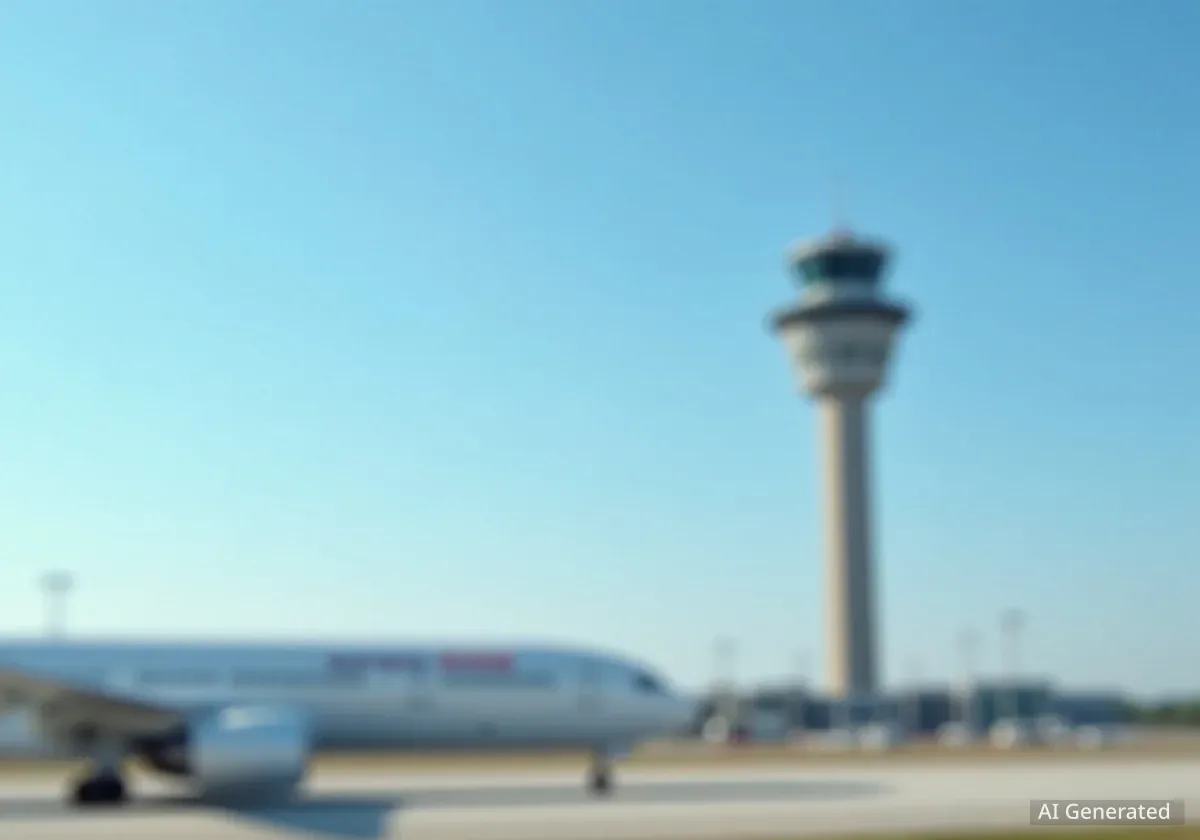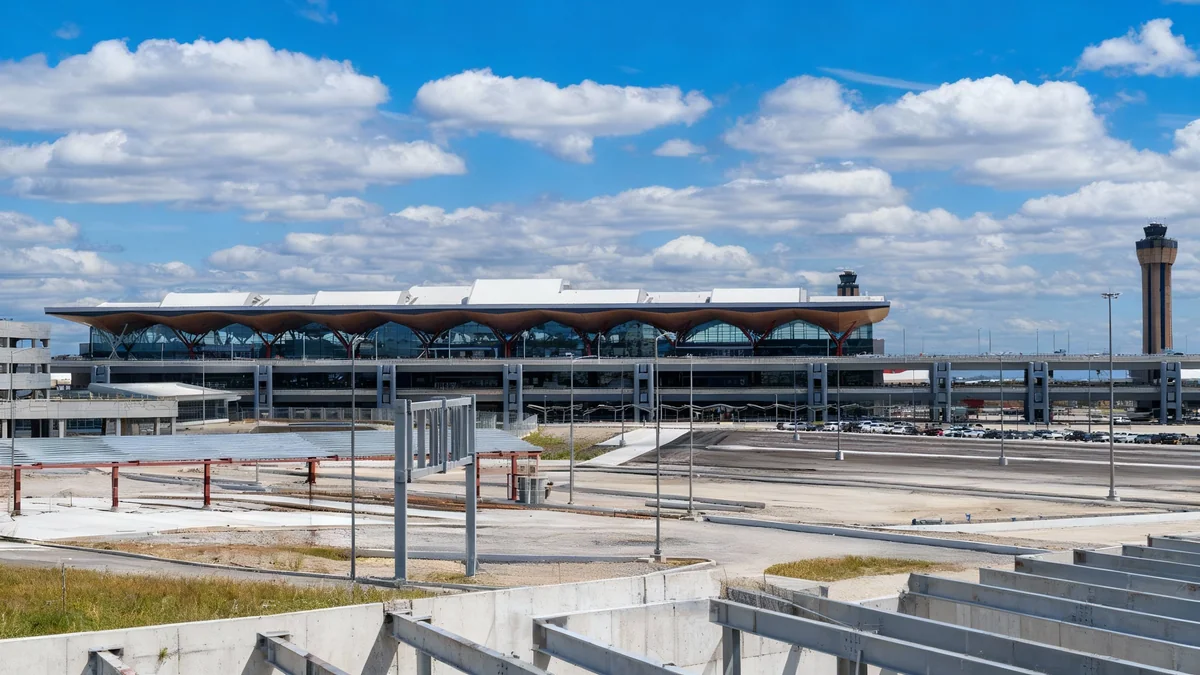Flight reductions at 40 major U.S. airports will remain at 6% instead of increasing to 10% by the end of the week. This decision follows a significant increase in air traffic controllers returning to work. The announcement comes as a government funding bill was signed, officially ending the longest government shutdown in history.
The Department of Transportation confirmed the decision was based on recommendations from the Federal Aviation Administration’s (FAA) safety team. There has been a rapid decline in controller callouts, which previously led to widespread flight disruptions.
Key Takeaways
- Flight reductions at 40 U.S. airports will stay at 6%, not increase to 10%.
- More air traffic controllers have returned to work, reducing staffing shortages.
- The decision follows the end of a government shutdown.
- Over 10,100 flights were canceled since restrictions began last Friday.
- Airlines anticipate restoring full operations ahead of the Thanksgiving holiday.
Government Shutdown Impact on Air Travel
Last week, flight cuts were implemented as a growing number of air traffic controllers were calling out of work. Many cited stress and the necessity to take on second jobs to compensate for missed paychecks during the government impasse. This left control towers and facilities severely understaffed.
Air traffic controllers missed two paychecks during the shutdown. This financial strain directly contributed to staffing shortages and increased safety concerns across the national airspace system.
Quick Facts
- Original Plan: FAA intended to increase flight cuts from 4% to 10%.
- Current Status: Reductions capped at 6%.
- Total Cancellations: More than 10,100 flights since last Friday.
- Affected Airports: 40 major U.S. airports, including hubs like New York, Atlanta, Los Angeles, and Chicago.
Assessing System Stability
Transportation Secretary Sean Duffy stated that the 6% limit will remain in place while officials evaluate whether the air traffic system can safely return to normal operations. He did not provide a specific timeline for this assessment.
"If the FAA safety team determines the trend lines are moving in the right direction, we’ll put forward a path to resume normal operations," Duffy said in a statement. "Safety remains our top priority, and all decisions will be guided by data."
FAA Administrator Bryan Bedford echoed these sentiments, emphasizing that safety is the primary concern. All future decisions will rely on comprehensive data analysis.
Airlines React with Optimism
Delta Airlines expressed an optimistic outlook regarding the duration of flight reductions. In a statement, the airline indicated it looked forward to bringing its operation back to full capacity over the next few days.
Since the flight restrictions took effect last Friday, more than 10,100 flights have been canceled. This data comes from the flight tracking website FlightAware. The initial FAA plan was to escalate flight cuts from 4% to 10% at the 40 affected airports.
Background on Flight Cuts
The FAA previously cited worrisome safety data as the reason for needing flight reductions. These cuts were intended to ease pressure on the aviation system and manage worsening staffing shortages at air traffic control facilities. Reports of planes getting too close in the air, increased runway incursions, and pilot concerns about controller responses were mentioned by Secretary Duffy at a recent press conference at Chicago’s O’Hare International Airport.
Industry Group Relief
Airlines for America, a trade group representing U.S. airlines, expressed gratitude for the newly signed government funding bill. The organization posted on social media that reopening the government would allow U.S. airlines to restore operations. This is crucial ahead of the busy Thanksgiving holiday travel period, which is approximately two weeks away.
The full stabilization of the aviation system remains uncertain. The flight restrictions rapidly disrupted airline operations, causing many planes to be rerouted and not in their scheduled locations. Airlines for America had previously warned that residual effects would last for days.
Challenges Beyond the Shutdown
Eric Chaffee, a professor at Case Western Reserve who studies risk management, highlighted the complex hurdles airlines face. These include rebuilding flight schedules that were planned months in advance. The sudden nature of the restrictions made adjustments challenging.
Airline and hotel trade groups had earlier urged the House of Representatives to act swiftly to end the shutdown. They warned of potential chaos during the holiday travel season. The flight cuts also affected other flights and crews, leading to more cancellations than the FAA initially required.
Worsening Factors
The impact of the restrictions was intensified by unexpected controller shortages over the weekend and severe weather conditions across various regions. These combined factors created a challenging environment for air travel.
Geoff Freeman, CEO of the U.S. Travel Association, stressed the importance of paying essential federal workers like air traffic controllers and Transportation Security Administration (TSA) workers during any future government shutdowns.
"America cannot afford another self-inflicted crisis that threatens the systems millions rely on every day," Freeman stated.
The swift resolution of the government shutdown and the return of air traffic controllers are critical steps toward restoring normalcy in air travel. However, the full recovery of the complex aviation system will require ongoing effort and careful management.





